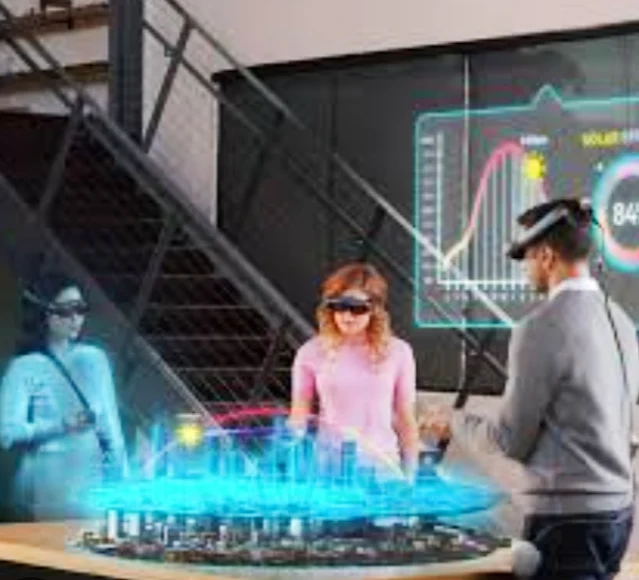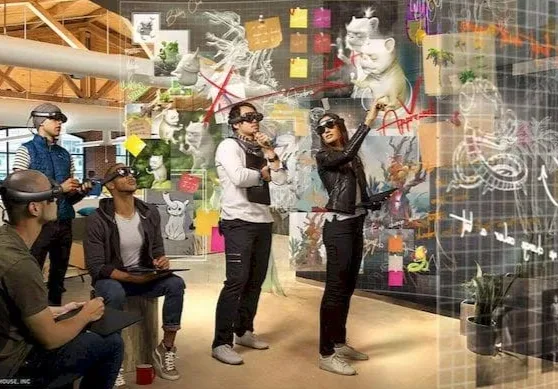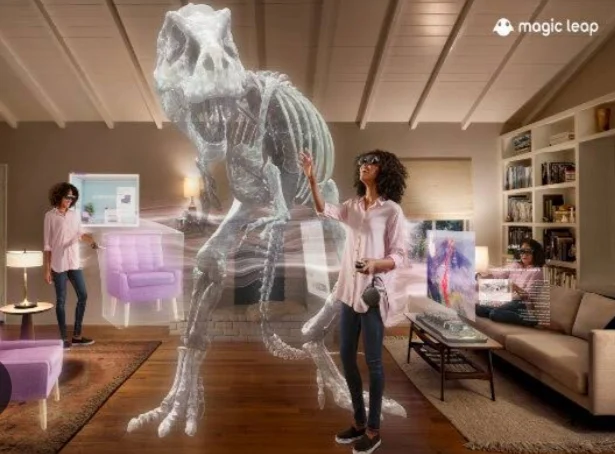Magic Leap for Enterprise Solutions: Historical Timeline
Magic Leap has been steadily developing its AR technology with a focus on enterprise applications.
Here's a timeline highlighting some key milestones:
| Year | Event |
|---|---|
| 2011 | Magic Leap is founded by Rony Abovitz. |
| 2014 | Magic Leap secures significant funding, generating buzz around its secretive AR technology. |
| 2015 | Magic Leap unveils a teaser video showcasing early glimpses of its AR capabilities. |
| 2017 | Magic Leap announces Magic Leap One, its first AR headset targeted at developers. |
| 2018 | Magic Leap One: Creator Edition is released, allowing developers to build enterprise AR applications. |
| 2020 | Magic Leap discontinues Magic Leap One and shifts focus on enterprise solutions. |
| 2021 | Magic Leap unveils Magic Leap 2, a lightweight and powerful AR headset designed specifically for businesses. |
| 2023 (Present) | Magic Leap partners with various industries like manufacturing, healthcare, and engineering to implement AR solutions for improved workflows and training. |
Table: Key Features Introduced Over Time
| Year | Feature | Significance for Enterprise Solutions |
|---|---|---|
| 2017 | Spatial Tracking and Mapping | Enables accurate placement of digital objects in the real world, crucial for AR training and design visualization. |
| 2018 | Passthrough VR (PVR) | Allows users to maintain awareness of their surroundings while interacting with AR content, improving safety in work environments. |
| 2021 | Open Platform | Enables businesses to develop custom AR applications tailored to their specific needs. |
| 2023 | AR Cloud | Facilitates shared AR experiences between remote teams, allowing for collaborative work in real-time. |
This timeline provides a snapshot of Magic Leap's journey in building enterprise-focused AR solutions. As the technology continues to evolve, we can expect even more innovative features and applications to emerge in the coming years.
Magic Leap for Enterprise Solutions: Transforming Work through Augmented Reality
Magic Leap is a leader in augmented reality (AR) technology, offering a unique solution specifically designed for businesses. Their AR headset, Magic Leap 2, goes beyond traditional AR by creating a seamless blend of digital elements within the physical world, allowing users to interact with information and complete tasks in a completely new way.
Here's how Magic Leap is revolutionizing the enterprise landscape:
- Increased Efficiency and Productivity: AR overlays can provide instant access to crucial information, streamlining workflows and reducing training times.
- Enhanced Collaboration: Remote teams can collaborate on projects in real-time, manipulating virtual objects within a shared physical space.
- Improved Visualization: Complex concepts and data can be brought to life through AR, allowing for better planning, design, and decision-making.
- Scalable Expertise: Remote guidance and troubleshooting become effortless with AR, enabling experts to virtually assist workers on-site.
Key Features of Magic Leap for Enterprise Solutions
| Feature | Description |
|---|---|
| Magic Leap 2 Headset | Lightweight, ergonomic design with a wide field-of-view for a natural AR experience. |
| Passthrough VR (PVR) | Maintains user's real-world view while integrating digital content seamlessly. |
| Open Platform | Allows businesses to develop custom AR applications tailored to their specific needs. |
| Powerful Processing | Delivers high-performance computing to run demanding enterprise AR applications. |
| Device Management | Simplifies deployment and management of Magic Leap devices within an organization. |
| AR Cloud | Enables shared AR experiences with features like spatial mapping and anchors. |
Magic Leap's AR solutions are making waves across various industries, including:
- Manufacturing: AR overlays can guide assembly processes, improve maintenance procedures, and enhance remote collaboration.
- Healthcare: Medical professionals can visualize patient data, conduct remote consultations, and practice complex procedures in a simulated environment.
- Engineering and Construction: AR allows for visualizing building plans in real-world scale, facilitating on-site inspections, and improving worker safety.
As AR technology continues to evolve, Magic Leap is at the forefront, providing businesses with the tools to transform how they work. With its focus on enterprise applications, Magic Leap is well-positioned to unlock the true potential of AR and empower companies to achieve greater efficiency, productivity, and innovation.
Magic Leap Technology Uses for Enterprise Solutions
Magic Leap offers a variety of cutting-edge technologies that come together to create advanced AR solutions for businesses. Here's a breakdown of some key technologies and their uses:
| Technology | Description | Use for Enterprise Solutions |
|---|---|---|
| Spatial Tracking and Mapping | Magic Leap 2 uses cameras and sensors to understand the user's environment in real-time. This allows for user motion tracking and accurate mapping of the surroundings. | * Safe and realistic on-the-job training and practice within a pre-mapped environment. * Visualization of factory or building data overlays in real space for layout planning and maintenance. * Remote collaboration where multiple users can interact with virtual objects in a shared, mapped physical space. |
| Mobile Computing | Magic Leap 2 is a standalone device that doesn't require a wired connection to a computer. This makes it highly portable and suitable for field use. | * Field inspectors and technicians can access information and 3D models directly at the worksite. * Healthcare workers can access patient data and medical records at the patient's bedside. * Immersive remote expert assistance, where the expert can see what the field worker sees and provide live instructions through AR. |
| Gesture Interaction | Magic Leap 2 supports natural hand interaction, allowing users to manipulate virtual objects using hand movements. | * More intuitive product design and prototyping with 3D hand interaction. * Directly overlaid schematics and work instructions that can be manipulated with hands for easier reference. * More engaging presentations and collaboration where users can directly interact with virtual elements. |
| Passthrough VR (PVR) | PVR blends the real-world view with digital elements, creating a seamless and immersive AR experience. Users can see their surroundings while still interacting with virtual content. | * Improved safety and situational awareness in industrial work environments. * Workplace training that combines virtual instructions with the real environment. * AR-guided machine repair procedures where users can see digital instructions while simultaneously viewing the physical machine. |
In addition to the technologies mentioned above, Magic Leap also leverages machine learning and artificial intelligence to personalize the AR experience and develop more advanced applications. This combination of technologies allows Magic Leap to deliver powerful and flexible AR solutions for various enterprise needs.
Frequently Asked Questions about Magic Leap for Enterprise Solutions
Magic Leap is a company that develops and manufactures augmented reality (AR) headsets. Their enterprise solutions are designed to enhance productivity, collaboration, and training in various industries.
General Questions
What is Magic Leap used for in enterprise settings?
- Magic Leap is used for a variety of enterprise applications, including:
- Training and Simulation: Providing immersive, hands-on training experiences.
- Design and Visualization: Enhancing design processes with interactive 3D models.
- Remote Assistance: Enabling experts to provide guidance to on-site workers.
- Collaboration: Fostering teamwork and communication through shared virtual environments.
- Magic Leap is used for a variety of enterprise applications, including:
How does Magic Leap work?
- Magic Leap headsets use a combination of optics and software to overlay digital content onto the real world. This creates a mixed reality experience where users can interact with both physical and virtual objects.
Technical Questions
What are the key features of Magic Leap Enterprise headsets?
- Magic Leap Enterprise headsets typically offer:
- High-resolution displays
- Accurate hand tracking
- Spatial audio
- Integration with enterprise software systems
- Magic Leap Enterprise headsets typically offer:
What are the limitations of Magic Leap technology?
- Some limitations of Magic Leap include:
- Battery life
- Field of view
- Price
- Some limitations of Magic Leap include:
Practical Questions
What industries are benefiting from Magic Leap Enterprise solutions?
- Magic Leap is being adopted by industries such as:
- Manufacturing
- Healthcare
- Retail
- Architecture and design
- Magic Leap is being adopted by industries such as:
How can Magic Leap improve efficiency and productivity in the workplace?
- Magic Leap can improve efficiency and productivity by:
- Reducing training time
- Enhancing collaboration
- Improving decision-making
- Providing remote assistance
- Magic Leap can improve efficiency and productivity by:
What are the challenges of implementing Magic Leap in an enterprise environment?
- Challenges include:
- Cost
- Technical support
- Integration with existing systems
- User adoption
- Challenges include:




